16 Of The Absolute Best Cheeses For Melting, According To A Chef
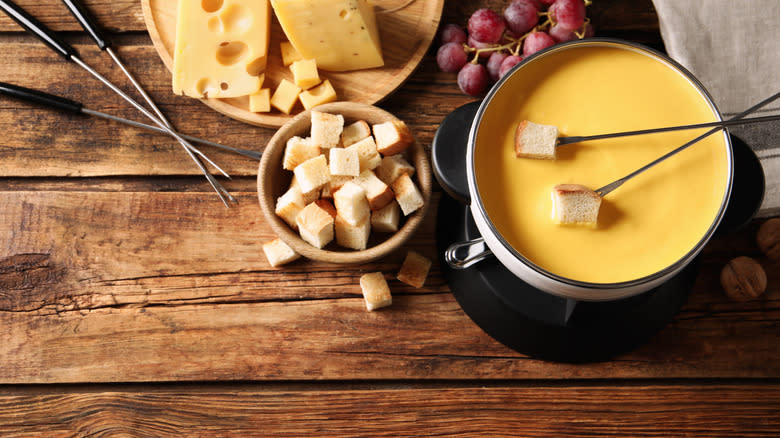
Few ingredients inspire chefs the way cheese does. From fondue and macaroni to quesadillas and pizza, almost all of the best comfort foods out there share one common ingredient: Unctuous, oozy, melted cheese. That said, not all cheeses are alike. Some yield more readily, developing that stretch and velvety texture that makes these dishes masterpieces. Others only soften or fail to give when heated or must be exposed to high temperatures to melt.
Understanding which cheeses you should incorporate into a recipe that requires them to melt requires some basic scientific knowledge. Generally speaking, the ideal cheese for melting is young and has high moisture, a decent amount of fat, moderate acidity, and has been rennet-set, though there are some exceptions. Even if a cheese melts well, some are better suited to specific recipes than others.
That is where you need a little insider knowledge to help figure out which melting cheese to use for a specific recipe. As a chef with nearly 18 years of professional experience, I'm here to help demystify the art of which melting cheeses are best and what recipes they're ideal in. Read on for the full scoop — or stretch, as the case may be.
Read more: French Cooking Tricks You Need In Your Life
Cream Cheese
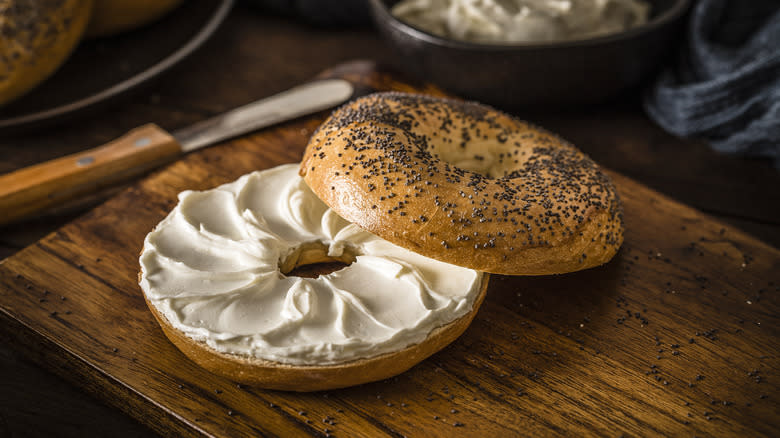
No compilation of the best melting cheeses would be complete without including cream cheese. Though cream cheese does not become stretchy, it's indispensable in the texture of many recipes and in helping more stubborn cheeses to melt more readily. Cream cheese is an American innovation dating back to the 1870s. Based on its French cousin, Neufchâtel, it's distinguished by being an acid versus rennet-set cow's milk cheese that contains various stabilizers. The USDA requires it to include at least 33% fat, 55% moisture, and acidity between 4.5 and 4.9.
This distinct morphology enables it to be used in block format to produce impossibly luscious, fluffy, creamy desserts and dips. It also allows it to melt at very low temperatures, developing smooth, velvety sauces and fillings for things like macaroni and cheese or baked ziti. I often combine it with cheeses like feta that like to soften rather than melt. Together, they form the perfect filling for tarts and phyllo pastry recipes.
Asiago
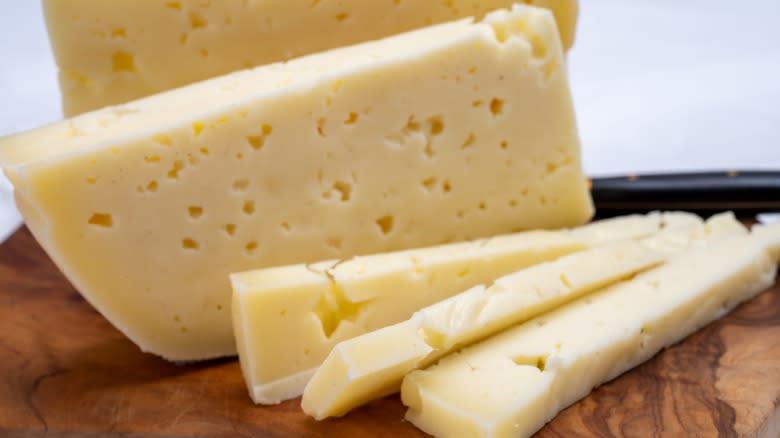
Among the best melting cheeses for sandwiches, pizza, lasagna, and more are fresh Asiago cheeses, known as fresco or pressato. This cow's milk cheese hails from Northeastern Italy within the Veneto and Trentino regions along the Dolomite range, a part of the Alps. Cheeses produced here retain D.O.P. or D.P.O. designation, indicating they're made from cow's milk sourced from cattle raised on the pastures along the mountain range.
This cheese comes in fresh and aged versions, but the former is best for melting. Aged from 20-40 days, Asiago fresco or pressato is a rennet-set cheese that develops a thin, edible rind surrounding a tender, almost sponge-like center with tiny holes similar to other Alpine cheeses, like Swiss. This cheese has a delicate, sweet, nutty flavor with a bite that finishes smoothly and lends complexity to any recipe. I love to use sliced Asiago in panini paired with fruity spreads, like fig or cherry preserves. It also works beautifully shredded into frittatas, heightening the flavor of the eggs.
Gruyère
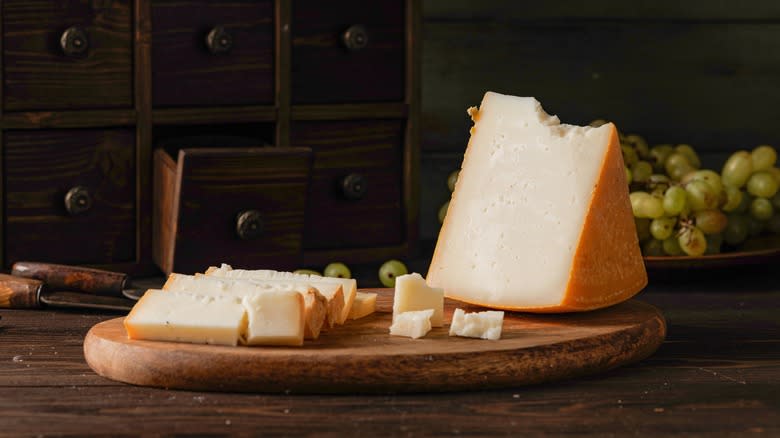
You have likely tried the delightful, nutty, earthy cheese known as Gruyère if you've ever eaten a croque-monsieur or classic French onion soup. Among the best cheeses to cook with, this rennet-set cow's milk cheese is produced in a tiny, Medieval town of the same name located in the foothills of Mount Moléson, north of the Swiss Alps. Like Swiss, this cheese is characterized by tiny eyes or pockets that form as gas is released during the five to 18-month aging process.
Distinctly high moisture and low-fat content enable this cheese to melt smoothly, with no residual oil, creating a luxurious mouthfeel. This makes it the cheese of choice for an authentic fondue. It can be used in virtually any recipe requiring a cheese that retains a velvety, stretchy texture when melted. My favorite place to use Gruyère is in a savory breakfast strata with mushrooms. The umami-rich fungi and delicate, nutty undertones of the cheese are a match made in culinary heaven.
Fontina
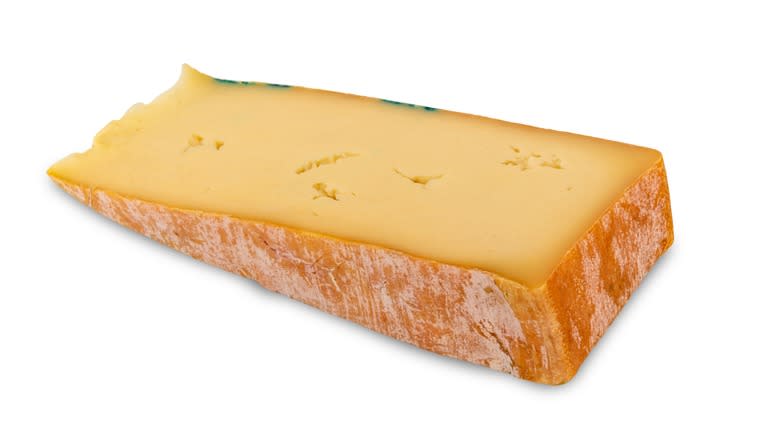
Another cheese that enjoys D.O.P. or D.P.O. protection is authentic fontina. This cheese has a lengthy production history in the Aosta Valley of Northwestern Italy, a region in the Alps. Like its cousins, Gruyère, and Asiago, this rennet-set cow's milk cheese is characterized by its distinctive earthy aroma, nutty flavor, and random holes that emerge as the cheese is aged in caves for roughly 80 days or longer. The resulting cheese has an edible rind and a fat content of approximately 45%, making it superior for melting.
While fontina-like cheese is produced all across the globe, the milk obtained from cows grazing on pastures in this region gives the real deal a remarkable grassy intensity and sweet finish. Often used in fondue and atop pizza, fontina is also a superstar when grated onto pasta or risotto dishes. Perhaps my favorite use for fontina is on a white pizza, combined with spinach, arugula, or other bitter leafy green and a hint of salty prosciutto.
Havarti
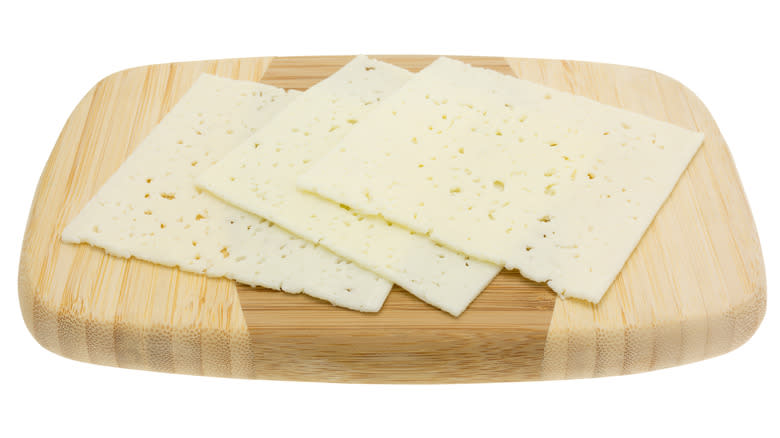
The semi-soft, buttery, cow's milk, rennet-set delicacy known as Havarti is one of my go-to cheeses for grilled cheese sandwiches. This Danish cheese has a fun history. It was the brainchild of farmer Hanne Nielsen, who spent years touring Europe to perfect her cheesemaking skills before returning to her homeland to create Havarti in the mid-1800s. The resulting cheesemaking technique was exported to Wisconsin, where domestic variations became popular. American varieties lack the rind quintessential to their Danish counterparts but retain the distinct tiny eyes that punctuate the interior of this cheese. Most Havarti is aged for between three and six months, though you can obtain pungent versions aged for over a year.
Young, creamy Havarti is best suited for melting and can be purchased in several varieties, with additions including cumin or caraway seeds, dill, horseradish, and chili peppers. Because Havarti has a uniquely acidic aftertaste and ultra-gooey texture when melted, it's remarkably versatile.
Muenster
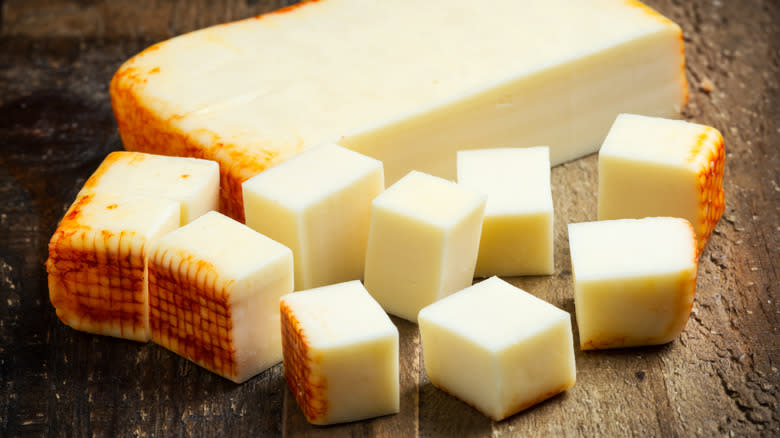
Muenster is an unusual cow's milk cheese with a unique orange rind, pungent aroma, and a creamy, almost sticky texture that melts well. Though popular domestically, Muenster originated in an ancient French monastery in the Alsace region. Seventh-century monks likely developed the cheesemaking technique as a medium for preserving the abundant milk produced by their cattle herd. Though the traditional cheese developed its colorful rind from bacterial formation during the washing and aging process, today it's formed by the addition of annatto to the exterior of the cheese.
While Muenster is particularly well suited to pairing with alcoholic libations, like beer and wine, its high moisture content makes it especially adept at melting. The key is using delicate heat and not overdoing it. Because of its unique characteristics, I enjoy using Muenster in a classic beer and cheese soup, where it can slowly meld with the flavors of the alcohol and develop a luscious mouthfeel.
Colby
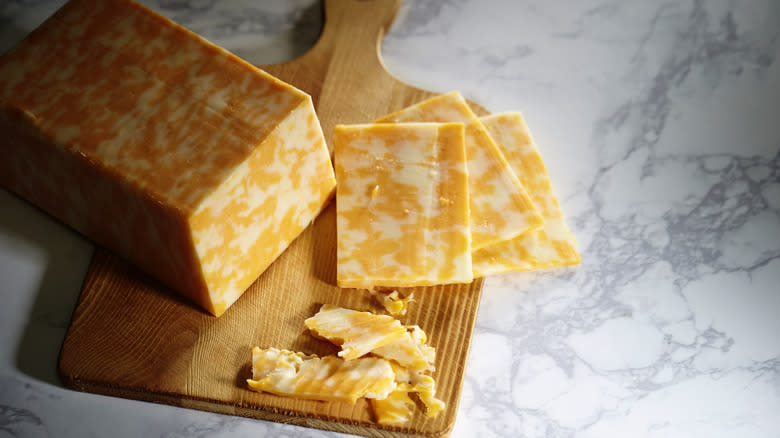
As American as apple pie, Colby cheese was developed in 1885 by cheesemakers in a Wisconsin city by the same name. While this cheese resembles Cheddar in some ways, particularly in its bright orange hue thanks to the addition of annatto, it differs markedly in texture and flavor. It begins life similarly by infusing cow's milk with acid and rennet. Once the curds form, they're rinsed in cold water, arresting the acidification process and creating a sweeter, less intense flavored cheese. Colby also undergoes shorter aging periods than Cheddar, only one to three months, giving it a softer texture and higher moisture content, which makes it especially adept at melting.
Colby can be found in blocks, logs (known as Longhorn Colby), and a two-tone iteration, combined with Monterey Jack. All three work beautifully in recipes and have a mild enough flavor to pair with delicate ingredients. When infused into macaroni and cheese, it produces a rich base that envelops the pasta like a luxurious, warm, satiny bath.
Cheddar
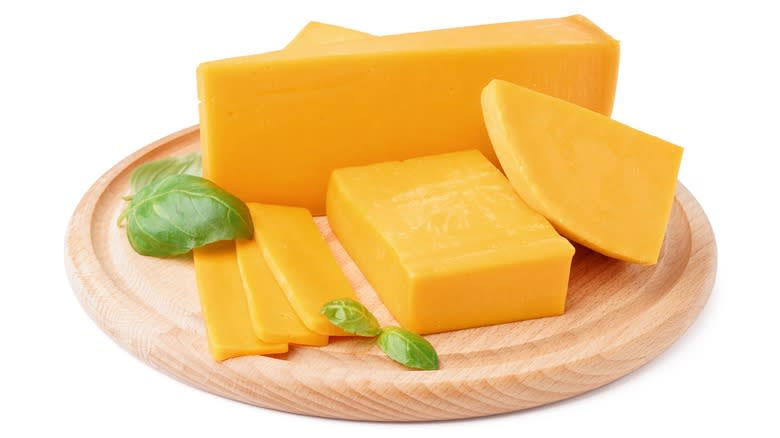
White or orange-hued, Cheddar is one of the world's most beloved cheeses. Its origins hail from the village of Cheddar in Somerset, England, where it was first made in the 12th century. This cow's milk, rennet-set cheese, has a distinctly dry and hard texture achieved through a piling and dehydrating process, in which curds formed into blocks are rotated until the proper moisture content is obtained, known as cheddaring. These blocks are subsequently cut up, salted, and reformed into their final shape before being sealed and aged.
Milder, young Cheddars, aged for only a few months, are better suited to melting than sharp, hard, aged ones, though both can be used. Younger Cheddar has a sweeter flavor, while aged Cheddar can be strong and salty. Cheddar lends itself to practically any recipe, though it's divine in a classic broccoli cheese soup where its nutty flavor can balance the bitterness of the vegetables and enrobe them in a velvety broth.
Gouda
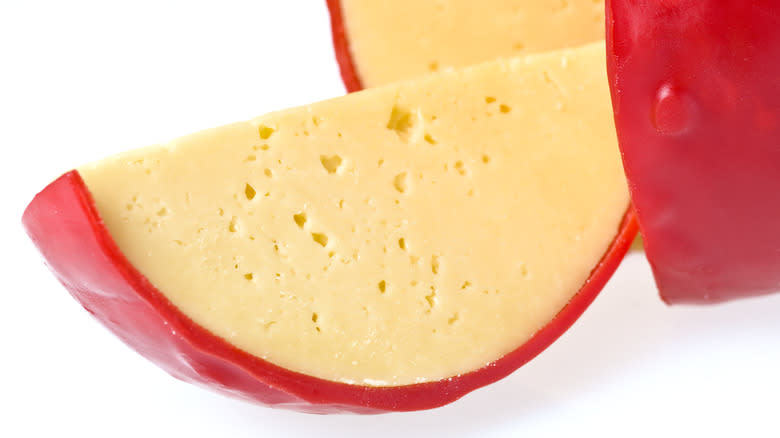
Gouda is most easily identified by the orange or red-hued paraffin wax rind encasing this nutty, sweet, delicate cow's milk, rennet-set cheese. Originating in the Netherlands, specifically, a town in Holland by the same name, this semi-hard cheese can be found in seven distinct forms ranging in age from young to firm, crystallized iterations with a robust flavor and less supple texture. Young gouda is particularly adept at melting because of its high-fat content, which hovers around 76%.
Gouda-style cheese is manufactured internationally, though authentic Gouda, which is labeled as such, can only be obtained from Holland where the cheese is produced from the milk of Dutch cows. Though all young Gouda is delicious in recipes needing a good melting cheese, smoked Gouda is especially popular thanks to its intense savory flavor. I often add Gouda to a breakfast sandwich, where its meltability is showcased in juxtaposition with umami-rich, salty meat, and slightly runny eggs.
Taleggio
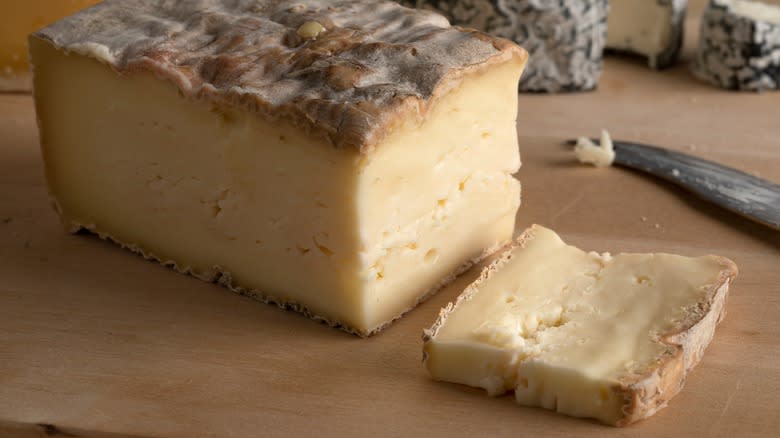
If you are searching for cheese to melt over pasta, pizza, or risotto with an assertive aroma and an earthy, buttery, if not slightly funky flavor, look no further than Taleggio. This cheese, which has obtained D.O.P. or D.P.O. status, hails from the valleys of Northern Italy in Lombardy, Piedmont, and Veneto. It's characterized by its washed or smeared rind, a process that creates the gooiest and most intensely scented cheeses. This cow's milk, rennet-set cheese undergoes a unique aging process, during which it's washed weekly for 35 to 50 days using a salt brine that helps to ripen it from the outside in, keeping its exterior wet while encouraging the proliferation of B. linens bacteria which leave behind a rose-colored, brittle, edible rind.
I have a penchant for strong-smelling cheeses and find they impart a savory, almost meaty quality to any dish. Taleggio is particularly well suited to pairing with other umami-rich ingredients like mushrooms, or with dried fruit and preserves where the sweetness can balance out the intensity of the cheese.
Provolone
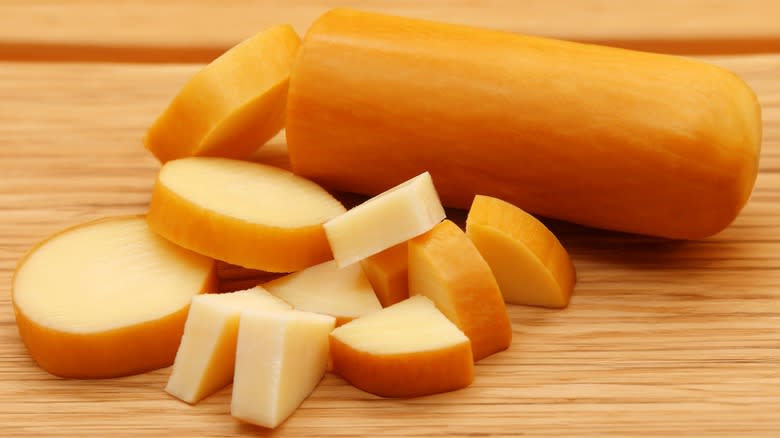
Provolone is an Italian cow's milk, rennet-set cheese. It's a member of the pasta filata family of cheeses, the most famous member of which is mozzarella. These cheeses undergo a unique production process, during which the curds are heated in hot water before being slowly kneaded together, pulled, and stretched until they develop a homogenized, chewy, ropey mouthfeel. The finished cheese is then encased in a wax or plastic rind before being allowed to age.
Aged provolone can be made dolce (sweet) or piccante (sharp), denoting the different types of rennet used and longer aging times for the latter — provolone dolce is given two to three months of aging time, while provolone piccante takes from four months to a full year. Both make great melting cheeses and can enhance the complexity of any sandwich, pizza, pasta, or casserole, like the top layer of a classic lasagna recipe. The delectable melting properties and flavor of provolone cheese will be familiar if you've ever eaten a gooey muffuletta sandwich.
Monterey Jack Or Pepper Jack
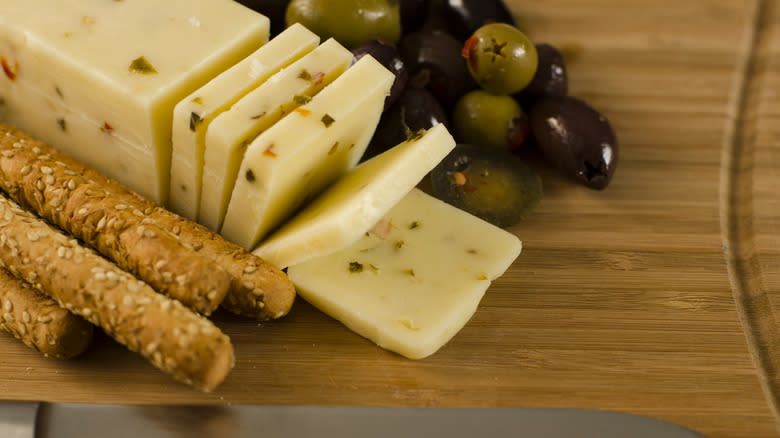
If you love Tex-Mex or Mexican cuisine, you're likely familiar with the melting prowess of Monterey Jack cheese. From quesadillas to queso fresco to toppings for a chile con carne, this relatively neutral, cow's milk, rennet-set cheese has a sordid and somewhat convoluted history. Though precise details are contested, what remains true is that businessman David Jacks popularized this California cheese and gave it its moniker.
The high-moisture, semi-hard iteration of this cheese, aged from several weeks to four months, can be found in plain and seasoned varieties, like pepper jack. When sliced or grated, its distinct texture and flavor make it ideal as a substitute for grated mozzarella on homemade pizza. Its slightly nutty, creamy flavor lends itself to all kinds of toppings, from salt-cured meats to pesto. If you like heat, try creating a Tex-Mex spin on a pie with pepper jack, cooked ground beef, corn, black beans, and fresh tomatoes, and garnish it with guacamole.
Blue Cheese
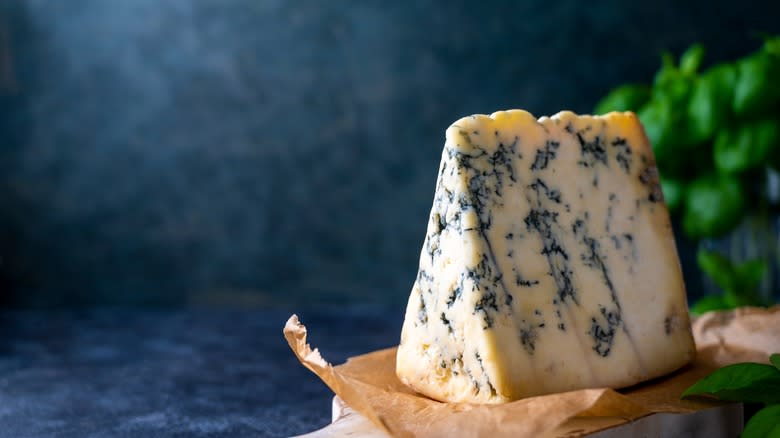
If moldy cheese doesn't sound particularly appetizing, I recommend giving it a second chance. Blue cheese can be obtained in many forms, from milder Italian Gorgonzola Dolce to smoked Wisconsin blues with a remarkable savory flavor and mild tanginess. This cheese obtains its characteristic veining from Penicillium roqueforti, Penicillium camemberti, or Penicillium glaucum. Blue cheese can be made from any milk, making it highly versatile in its culinary applications.
When it comes to melting, blue cheese is particularly adept at doing so — a by-product of its low calcium and protein content. While adding it on burgers, pizza, pasta dishes, and creamy dips is common, it can also take your macaroni and cheese to the next level. The key is to use moderation and pair it with other cheeses with complementary yet distinct flavor profiles, like Gruyère and Colby. Don't be afraid of using mix-ins either, like cured meats or dried fruit. The hint of sweetness can temper and complement the blue cheese and provide a delightful juxtaposition of mouthfeel.
Brie
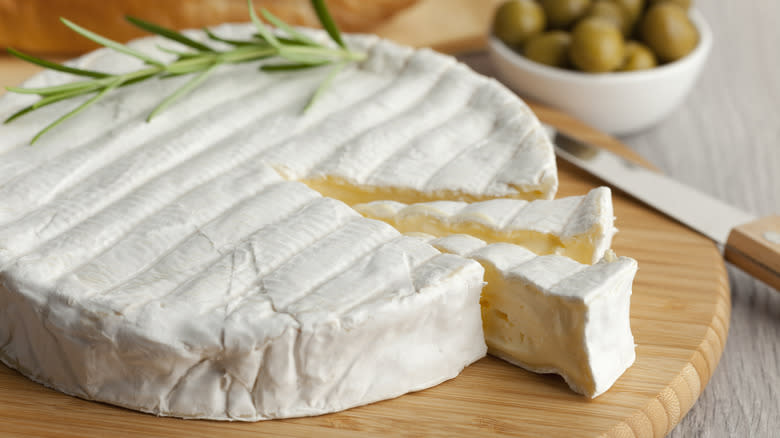
Another cheese that sometimes provokes skepticism because of its assertive aroma, gooey texture, and bloomy-but-edible moldy rind is Brie. This cheese, known as a triple-crème fromage, hails from France. This soft-ripened cheese is aged anywhere from four to 10 weeks for peak flavor. Varieties in France that have AOC (appellation d'origine contrôlée) and AOP (appellation d'origine protégée) protections, like Brie de Meaux and Brie de Melun, are made with raw milk, but most versions elsewhere are made from pasteurized cow's or goat's milk. This rennet-set cheese is encased in salt and ripens until its characteristic rind is formed.
Brie naturally melts well because of its high moisture and fat content. While it can be used in grilled cheese sandwiches or on pizza, it truly shines when wrapped in puff pastry. As the pastry browns in the oven, the cheese melts inside. Cutting into this Brie en croute, the cheese oozes out, begging to be smeared onto fruit or crackers.
Mozzarella

I'd be remiss not to include mozzarella in any discussion about the best melting cheeses. Whether you're using low-moisture, part-skim shredded mozzarella, or freshly made balls of mozzarella, they both have a place in culinary applications involving melting cheese. Like provolone, this Italian cheese is a rennet-set member of the pasta filata family of cheeses, which undergoes a kneading and stretching process in hot water after the curds have been separated from the whey. Though historically made from water buffalo milk, mozzarella today is more often made from cow's milk. It's creamy, mild, milky, and has a delightfully malleable texture that translates to the perfect pull when melted.
Aged mozzarella dehydrates and becomes saltier, making it ideal for pizza. Fresh mozzarella can be delectable on pizza but requires some finesse. Because of its high moisture content, it melts but can also render your pizza crust soggy. It's helpful to slice and drain fresh mozzarella on paper towels before adding it to your pizza crust.
Honorable Mention: Feta
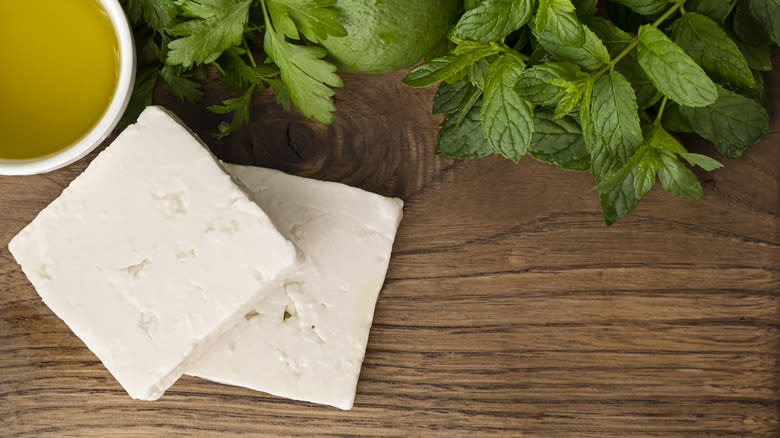
While feta isn't traditionally included in lists of the best melting cheeses, because it softens more than it melts, if you've seen the viral TikTok feta pasta recipe that's taken the internet by storm, you'll know that this cheese has a lot more going for it that some might think. This classic Greek cheese made from goat's and sheep's milk is known for its distinctly salty flavor and crumbly texture. A rennet-set cheese, it's brined in salt for roughly two months before becoming ripe. Variations of this cheese are made globally, with some types made from cow's milk.
Though sheep's milk feta tends to melt more readily than cow's milk, both can be coaxed into submission when used correctly. If you've ever put it on pizza or a baked potato, you'll know its taste simply cannot be beaten. For my money, the best way to showcase feta is in recipes like spanakopita, combined with other melting cheeses, like cream cheese. Once melded together, the luscious filling is an umami-bomb of flavor.
Read the original article on Daily Meal

